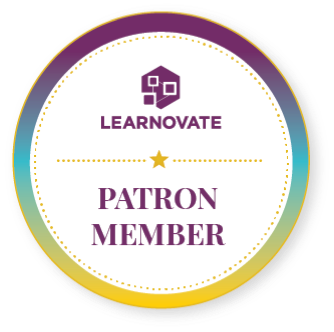The traditional model of higher education, often immovable, is now challenged to become responsive and adaptable to a rapidly evolving world. Curriculum agility, the capacity for educational programs to flexibly respond to such changes, has become a clear call for educational leaders and policy-makers.
Defining Curriculum Agility
Curriculum agility is the capacity for educational programs and curriculum to be flexible and responsive to external demands and internal innovation. It means creating academic structures that adapt to emerging technologies, market needs, and most importantly, student capabilities and aspirations.
An agile curriculum is not just responsive to change, it anticipates it, setting a course that keeps education relevant to the evolving needs of the industry and society. In practice, this can involve the integration of interdisciplinary and experiential learning, and a continuous review and adaptation cycle that keeps the curriculum’s content and delivery mechanism dynamic.
Principles of Curriculum Agility
To set the sails for agility, several guiding principles must be embraced:
Future-Oriented
Agile curricula are beaconed by the future, not trapped in the past. Programs should be designed with long-term trends and potential disruptions in mind, ensuring that graduates are not only ready for today’s world but can also anticipate and adapt to the challenges of tomorrow.
Responsiveness
Change moves at the speed of digital communication. Educational programs must be structured to respond swiftly to changes in industry demand and technological advancements. This means cutting through bureaucratic red tape to make timely adjustments that could, for instance, include the integration of new courses or the updating of content.
Engaged Stakeholders
To cultivate agility, all stakeholders—faculty, students, employers, and industry leaders—must be involved. Collaboration ensures that the curriculum reflects the breadth of community needs and expectations, making it both relevant and credible.
Continuous Improvement
An agile curriculum is never truly complete; it must be in a state of continuous review and improvement. Regular evaluations, feedback mechanisms, and the use of data analytics can provide the insight required to guide such responsive enhancements.
Experiential Learning
Learning by doing is a powerful tool for agility. Experiential learning opportunities, such as internships, practicums, and project-based curricula, not only enhance student engagement but also provide real-world experience in an evolving environment.
Key Areas for Curricular Adaptation
The winds of change blow more fiercely in some academic disciplines than others. However, several key areas call for immediate attention and adaptation:
Emerging Technologies
Disciplines at the forefront of technological innovation need to integrate these advancements into the curriculum swiftly. Fields like artificial intelligence, blockchain, and bioinformatics are not just evolving, but also creating new industries and disrupting existing ones.
Soft and Technical Skills
The divide between hard technical skills and soft transferable skills is becoming increasingly blurred. An agile curriculum must ensure a well-rounded education that offers both technical prowess and adaptability, creativity, and emotional intelligence.
Global Competence
Globalization connects economies, cultures, and knowledge, demanding graduates who are globally competent. This includes an understanding of international trends, cross-cultural communication abilities, and a global perspective in problem-solving.
Lifelong Learning
The adage that learning does not end with a diploma is truer than it has ever been. Preparing students for the reality of lifelong learning involves cultivating a growth mindset and instilling the skills and habits necessary for self-directed learning.
Steady at the Helm: Implementing Change
The prospect of revamping an entire curriculum can be daunting, and resistance to change can be as common as the desire for it. However, a phased approach, with clear goals and inclusive processes, can smooth the course.
Cultivating Leadership
Educational institutions must cultivate leaders with the vision and the drive to champion curricular agility. These leaders should in turn empower teachers to experiment and innovate.
Engaging Faculty
Faculty are at the heart of the curriculum, and their involvement is critical. Professional development, incentives for innovation, and recognition for successful program changes can galvanize their support.
Empowering Students
Students are not passive recipients of knowledge; their input can be enriching. Engaging students in the governance and design of the curriculum can lead to richer, more responsive educational experiences.
Reimagining Assessment
Traditional assessment may struggle to keep pace with an agile curriculum. New forms of assessment that are more competency-based, perhaps involving portfolios, can better reflect the dynamic skills and knowledge being taught.
Rethinking Resources
Curriculum agility often requires investment, not just in terms of money, but also in time and other resources. Digital learning tools, faculty support structures, and adaptive physical spaces are just a few examples of resources that can enable agile learning environments.
Setting Sail with Success
Institutions that have successfully implemented agile curricula have several things in common. They exhibit a culture of continuous improvement, a commitment to engagement with diverse stakeholders, and a willingness to experiment and learn. They also demonstrate solid leadership that can chart a clear vision and inspire others to follow.
By addressing the need for curriculum agility, higher education institutions can not only survive but also thrive in an increasingly turbulent environment.
